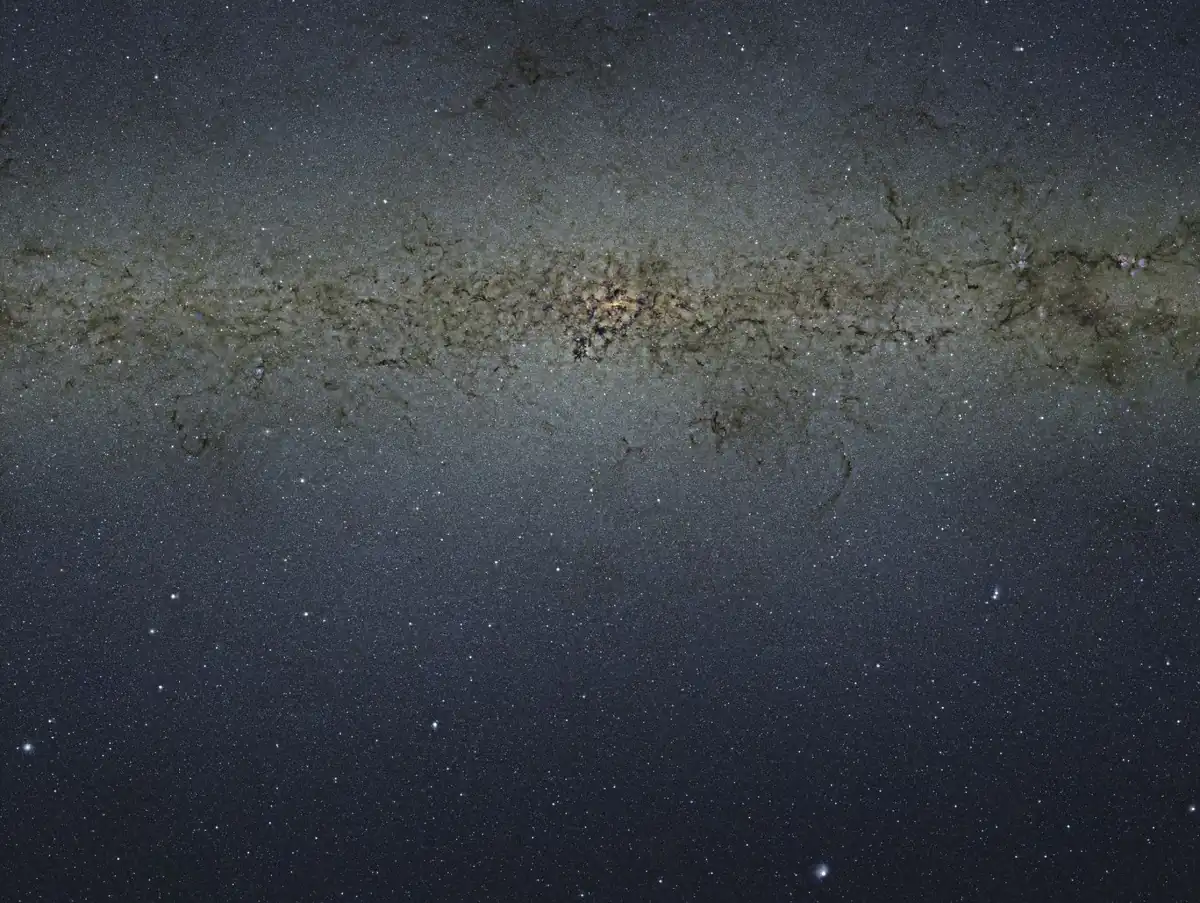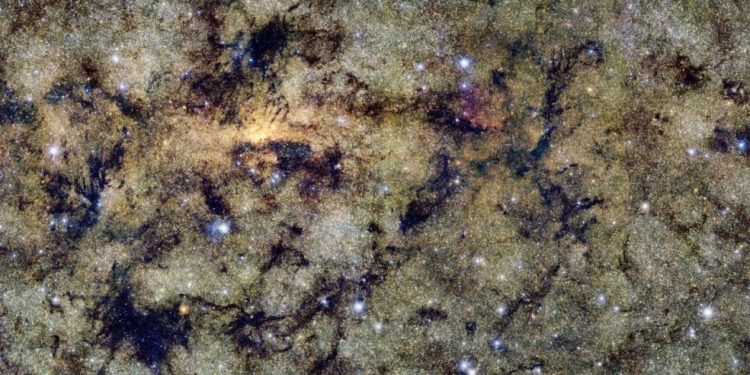This zoomable Milky Way image reveals more than 84 million stars packed into the dense, dust-obscured heart of our galaxy. Captured by the VISTA telescope using infrared light, this record-breaking image lets anyone explore the galactic core in staggering detail.
A record-breaking zoomable Milky Way image
Astronomers have captured one of the most detailed views ever taken of our galaxy’s central region. The zoomable Milky Way image—assembled using data from the European Southern Observatory’s VISTA telescope—spans a staggering 9 gigapixels and reveals more than 84 million stars previously hidden behind thick clouds of cosmic dust. If printed at book resolution, the image would measure 9 meters wide and 7 meters tall.
The VISTA telescope, stationed at the Paranal Observatory in Chile, was built to see what conventional optical telescopes cannot. By observing in the infrared part of the spectrum, it penetrates dense dust fields that block visible light, allowing astronomers to map stars in regions that are normally obscured. This zoomable Milky Way image provides a rare, unobstructed look into the galactic bulge—the central concentration of stars surrounding the Milky Way’s core.

The full-resolution version of the image is a colossal 24.6 gigabytes in size, composed of 108,500 by 81,500 pixels. It’s not something most devices can load in its entirety. That’s why ESO created an interactive zoom tool, enabling users to explore portions of the sky in remarkable clarity without needing to download the entire file. The zoomable Milky Way image covers approximately 315 square degrees of the sky—slightly less than 1% of the celestial sphere, but home to millions of stars.
A major leap in galactic mapping
According to the 2012 announcement from the European Southern Observatory, this survey “contains more than ten times more stars than previous studies and is a major step forward for the understanding of our home galaxy.” In terms of raw data, it represents one of the most ambitious infrared surveys of the Milky Way ever undertaken.
The project, known as the VVV Survey (VISTA Variables in the Vía Láctea), was designed not only to image the Milky Way but also to observe changes in variable stars over time. That makes this zoomable Milky Way image more than just a pretty picture—it’s part of a massive time-lapse study that could reveal how stars evolve, how they cluster, and how the structure of the galaxy changes across millennia.
VISTA’s camera uses three separate infrared filters to collect light, each helping astronomers distinguish between different types of stars and dust clouds. With those layers of data, researchers can determine stellar composition, distance, age, and motion. This turns the zoomable Milky Way image into both a map and a scientific time capsule.
You can explore the stars yourself
What makes this image even more remarkable is that anyone with an internet connection can explore it. ESO’s online platform lets users zoom in and scan across millions of stars—some clustered together in brilliant pockets of light, others scattered like grains of sand across the dark sky. You can start with a broad view of the galactic center, then dive into individual regions rich with star formation or buried in dark dust lanes.
Though the image only shows a small fraction of the entire Milky Way, its density is overwhelming. Every patch of light in the zoomable Milky Way image represents thousands of stars. Many of them are red giants, variable stars, or newly forming suns in stellar nurseries. Seeing this tiny segment of our galaxy in such depth reminds us how much of the cosmos remains unexplored—and how vast our home truly is.
While images like the Hubble Ultra Deep Field show the distant universe, this zoomable Milky Way image brings our own galaxy into focus. It’s a scientific achievement, a visual marvel, and an open invitation to look closer.











